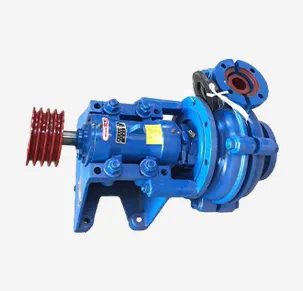Swahili
- Afrikaans
- Albanian
- Amharic
- Arabic
- Armenian
- Azerbaijani
- Basque
- Belarusian
- Bengali
- Bosnian
- Bulgarian
- Catalan
- Cebuano
- Corsican
- Croatian
- Czech
- Danish
- Dutch
- English
- Esperanto
- Estonian
- Finnish
- French
- Frisian
- Galician
- Georgian
- German
- Greek
- Gujarati
- Haitian Creole
- hausa
- hawaiian
- Hebrew
- Hindi
- Miao
- Hungarian
- Icelandic
- igbo
- Indonesian
- irish
- Italian
- Japanese
- Javanese
- Kannada
- kazakh
- Khmer
- Rwandese
- Korean
- Kurdish
- Kyrgyz
- Lao
- Latin
- Latvian
- Lithuanian
- Luxembourgish
- Macedonian
- Malgashi
- Malay
- Malayalam
- Maltese
- Maori
- Marathi
- Mongolian
- Myanmar
- Nepali
- Norwegian
- Norwegian
- Occitan
- Pashto
- Persian
- Polish
- Portuguese
- Punjabi
- Romanian
- Russian
- Samoan
- Scottish Gaelic
- Serbian
- Sesotho
- Shona
- Sindhi
- Sinhala
- Slovak
- Slovenian
- Somali
- Spanish
- Sundanese
- Swahili
- Swedish
- Tagalog
- Tajik
- Tamil
- Tatar
- Telugu
- Thai
- Turkish
- Turkmen
- Ukrainian
- Urdu
- Uighur
- Uzbek
- Vietnamese
- Welsh
- Bantu
- Yiddish
- Yoruba
- Zulu
Telephone: +86 13120555503
Email: frank@cypump.com
Oktoba . 20, 2024 14:19 Back to list
slurry pump parts
Understanding Slurry Pump Parts and Their Importance
Slurry pumps are vital components in various industrial processes, especially in mining, construction, and waste management. These pumps are specifically designed to transport slurries, which are mixtures of solids and liquids, often abrasive and corrosive in nature. To operate effectively, slurry pumps are made up of several critical parts that ensure durability, performance, and efficiency. This article will explore the essential components of a slurry pump and their significance.
1. Pump Body
The pump body, also known as the casing, is the outer shell that houses all the internal components of the slurry pump. It is typically constructed from robust materials such as cast iron or steel to withstand the rigors of abrasive materials flowing through it. The design of the pump body is crucial; it must manage the pressure generated during operation while facilitating smooth flow of the slurry. The shape and size can vary, depending on the application, but its primary purpose remains the same to provide structural integrity and minimize wear.
2. Impeller
The impeller is a crucial component that generates the flow of the slurry. It is typically designed with a series of blades that impart kinetic energy to the slurry, propelling it through the pump. The design of the impeller influences the pump's efficiency, total dynamic head, and the ability to handle various solid sizes. In slurry pumps, impellers are often made from high-chrome alloys or rubber-lined for enhanced durability against wear caused by abrasive particles. Proper selection of the impeller design based on the application can significantly impact the pump's performance.
3. Shaft
The shaft connects the impeller to the motor, transferring rotational energy to the impeller and thus enabling the movement of the slurry. The design and material of the shaft are vital, as it must support the dynamic loads and stress generated during operation. Depending on the specific requirements, shafts may be designed with different diameters and lengths and constructed from stainless steel for corrosion resistance.
slurry pump parts

4. Bearings
Bearings are essential in slurry pumps to support the shaft and reduce friction during operation. They play a crucial role in maintaining the alignment of the shaft and ensuring smooth rotation. In harsh slurry environments, bearings often face significant wear; thus, they are usually constructed from durable materials capable of withstanding high pressures and abrasive conditions. Lubrication systems are also integrated to ensure that bearings operate smoothly and prolong their lifespan.
5. Seal
Seals are critical in preventing slurry leaks from the pump. In slurry pumps, mechanical seals or packing seals are commonly used to contain the fluid within the pump body. Effective sealing is essential to avoid leaks that could lead to environmental contamination or operational inefficiencies. The selection of seal materials depends on the type of slurry, temperature, and pressure conditions. A well-designed sealing system is vital for the longevity and reliability of the pump.
6. Discharge and Suction Nozzles
The discharge and suction nozzles facilitate the entry and exit of the slurry into and out of the pump. Proper design and positioning of these nozzles are crucial for maximizing the efficiency and flow rate of the pump. The orientation and size of the nozzles can also affect the system's overall pressure and flow dynamics, thus influencing the pump's operational performance.
Conclusion
In summary, each part of a slurry pump plays a specific role in enhancing its performance and durability. The pump body, impeller, shaft, bearings, seals, and nozzles all contribute to the efficient handling of abrasive and corrosive slurries. Understanding these components not only aids in selecting the right pump for specific applications but also emphasizes the importance of regular maintenance and monitoring to ensure optimal performance in harsh industrial environments. Investing in high-quality slurry pump parts can lead to improved efficiency, reduced downtime, and significant cost savings over time. Proper knowledge and attention to these critical components are essential for anyone involved in industries reliant on slurry transport.
-
High-Efficiency Submersible Effluent Pump for Sewage & Wastewater Solutions
NewsJul.08,2025
-
High Quality CH Warman Slurry Pump Factory - Leading Horizontal Slurry Pump Supplier
NewsJul.08,2025
-
Hot Sale Chemical Circulating Pump – Efficient & Durable Slurry Circulating Pump Solutions
NewsJul.08,2025
-
High-Efficiency Submersible Dredge Pump for Sand & Gravel Durable Dredge Slurry Pumps Solutions
NewsJul.07,2025
-
Wholesale Slurry Pump Impeller Supplier – High-Quality & Efficient Pump Parts for Enhanced Performance
NewsJul.07,2025
-
High-Efficiency Water Submersible Pumps Reliable Water Pump for Potable Water Supply
NewsJul.06,2025










